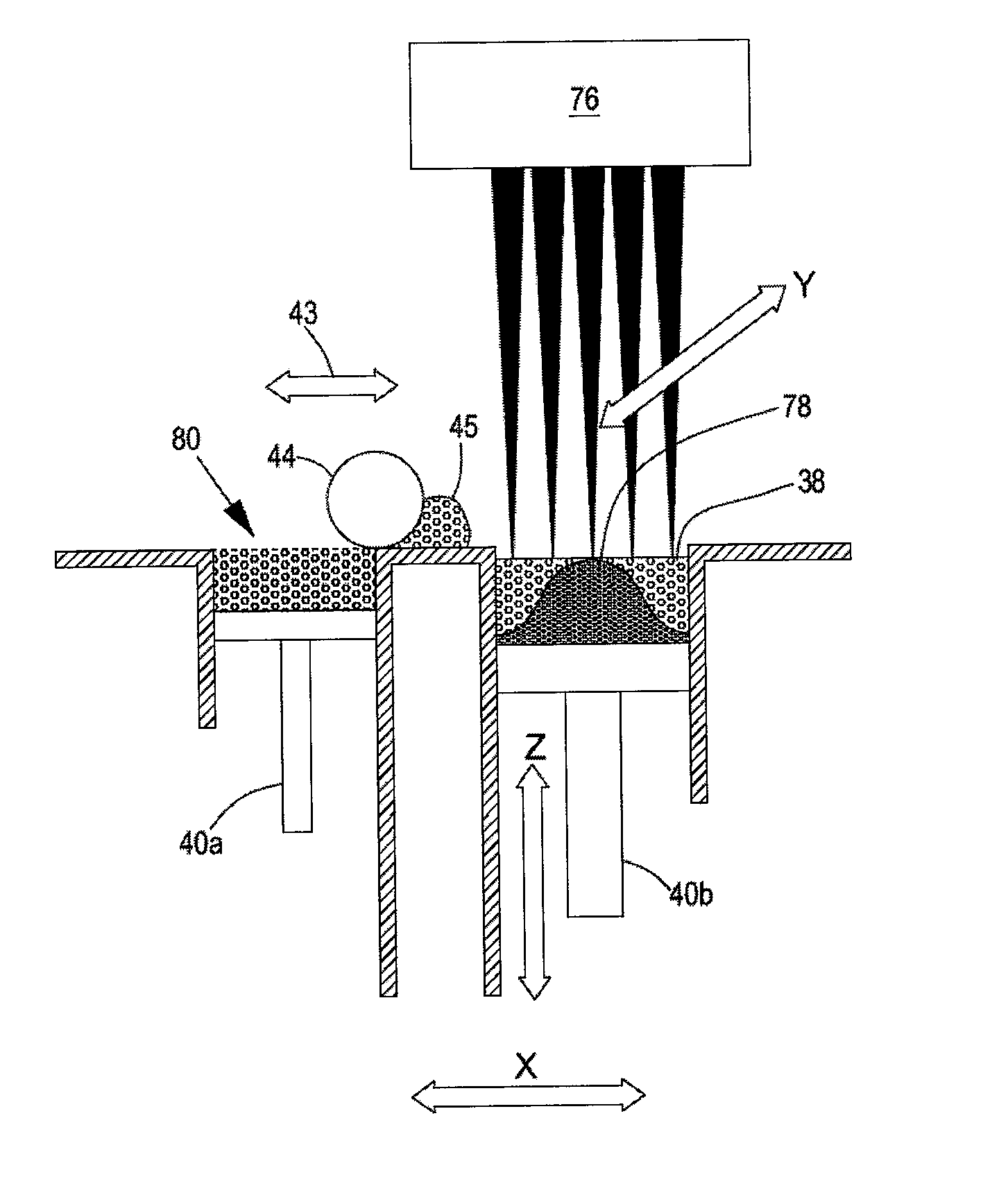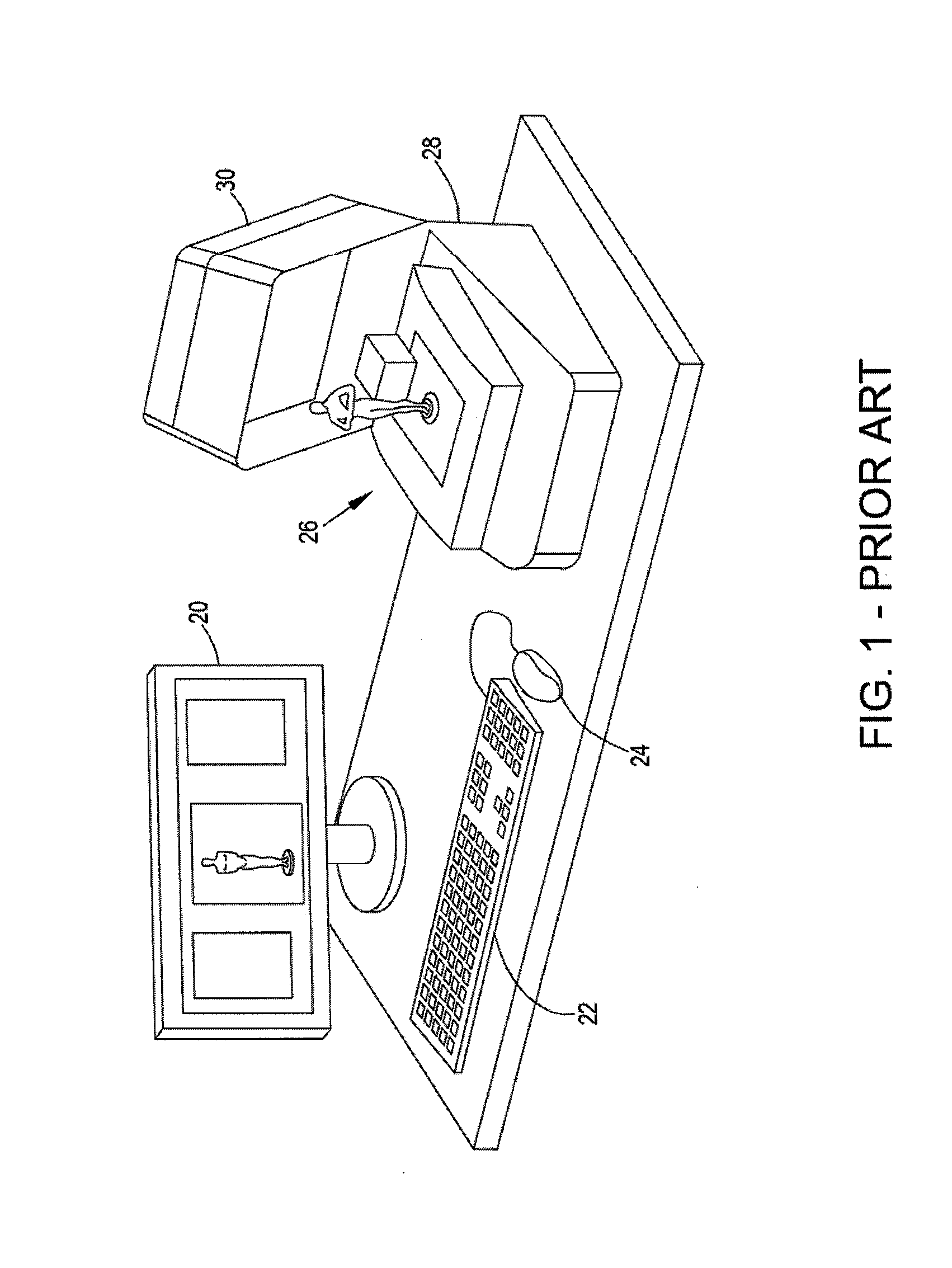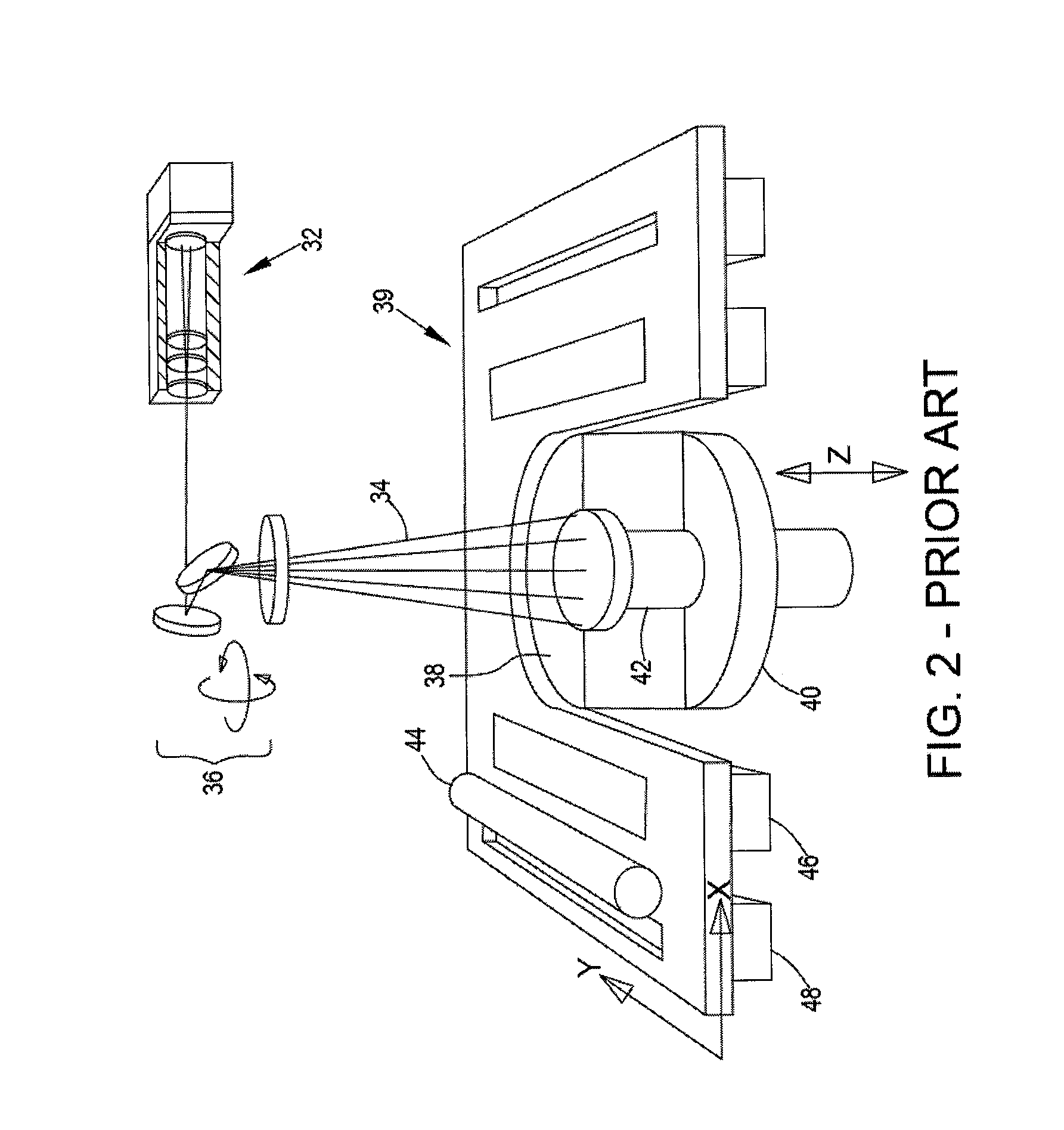Device and a method for 3D printing and manufacturing of materials using quantum cascade lasers
a quantum cascade laser and 3d printing technology, applied in the field of 3d printing and manufacturing, can solve the problems of not having the mechanical properties of plastics they mimic, the great vision of producing “whatever you imagine” is still very limited, and the current 3d printing system suffers from many drawbacks, so as to achieve more compact size and efficient absorption of radiant energy
- Summary
- Abstract
- Description
- Claims
- Application Information
AI Technical Summary
Benefits of technology
Problems solved by technology
Method used
Image
Examples
Embodiment Construction
[0067]FIG. 1 is a generalized portrayal of a typical desk-top 3D printer system in accordance with the prior art. The major components comprise a computer (not shown), a monitor 20 for working with a 3D print program (suggested by the images on the screen monitor 20), a standard keyboard 22, a mouse 24, and a desktop 3D printer 26 in a housing 28 provided with a protective lid 30. When the design for a target object has been uploaded by the computer as seen on monitor 20, and the 3D program is run, the desktop 3D printer 26 produces a three-dimensional solid of the target object from the digital model on the monitor 20 by laying down additive layers of materials within the housing 28 and fusing them together in stages in methods as are known to those skilled in the art.
[0068]FIG. 2 is an orthographic diagram of the method of 3D printing by selective laser sintering (SLS) with a CO2 laser-based process in accordance with the prior art. A CO2 laser provides a concentrated heating beam...
PUM
| Property | Measurement | Unit |
|---|---|---|
| Length | aaaaa | aaaaa |
| Length | aaaaa | aaaaa |
| Length | aaaaa | aaaaa |
Abstract
Description
Claims
Application Information
 Login to View More
Login to View More - R&D
- Intellectual Property
- Life Sciences
- Materials
- Tech Scout
- Unparalleled Data Quality
- Higher Quality Content
- 60% Fewer Hallucinations
Browse by: Latest US Patents, China's latest patents, Technical Efficacy Thesaurus, Application Domain, Technology Topic, Popular Technical Reports.
© 2025 PatSnap. All rights reserved.Legal|Privacy policy|Modern Slavery Act Transparency Statement|Sitemap|About US| Contact US: help@patsnap.com



